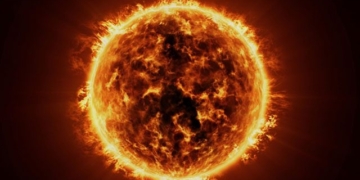The Yucatan Peninsula in Central America, the birthplace of the famous Maya civilization, appears to have been a victim of recurring droughts every 208 years, coinciding with the sun’s 206-year activity cycle. This is the latest announcement from American researchers.
The worst drought seems to have played a decisive role in the collapse of this civilization around 900 AD.
The Maya were among the great ancient civilizations of Central America, reaching their peak in the 9th century. They created magnificent religious cities, complex calendars and mathematical systems, hieroglyphic writing, intricate sculptures, and paintings. Notably, they constructed soaring stone pyramids in various locations, such as Tikal in Guatemala, Palenque in Mexico, and Copan in Honduras.
Evidence of Drought
In 1993, Professor David Hodell and his team at the University of Florida collected sediment samples from the bottom of Lake Chichancanab, Mexico, located north of the Yucatan Peninsula, to establish a “record” of climate change in the region. They found a significant concentration of gypsum (calcium sulfate) in random layers.
The researchers suggest that as rainfall decreased, the evaporation of lake water caused salts to deposit at the bottom, forming thin layers of gypsum. Thus, the gypsum layers found in Lake Chichancanab serve as verifiable evidence of drought periods in the history of this region.
The drought cycle is quite remarkable, repeating every 208 years. This timeframe nearly coincides with the previously known solar activity cycle: the sun reaches peak energy output after 206 years.
“It seems that changes in the energy emitted by the sun have directly impacted the climate of the Yucatan region, causing recurring droughts that sequentially affected the evolution of the Maya people,” stated Professor Hodell.
“Not Just a Coincidence”
Researchers have also identified several other drought periods that coincide with the decline in construction activity among the Maya. These occurred around 475-250 BC and 125-210 AD. The most severe drought occurred between 750-850 AD, coinciding with the time when the Maya civilization fell into obscurity.
Evidence shows that droughts have directly affected the development of the Maya civilization. While this does not lead to a definitive conclusion, Hodell observes, “it is hard to consider it merely a normal coincidence.” He also noted, “I believe drought played a significant role, but there will be other factors, such as population growth, soil degradation, and changes in political and social dynamics, that interacted.”
Other climate researchers using tree-ring dating methods have also found evidence of a recurring drought cycle every two hundred years, aligned with the sun’s fluctuating rhythms.



















































